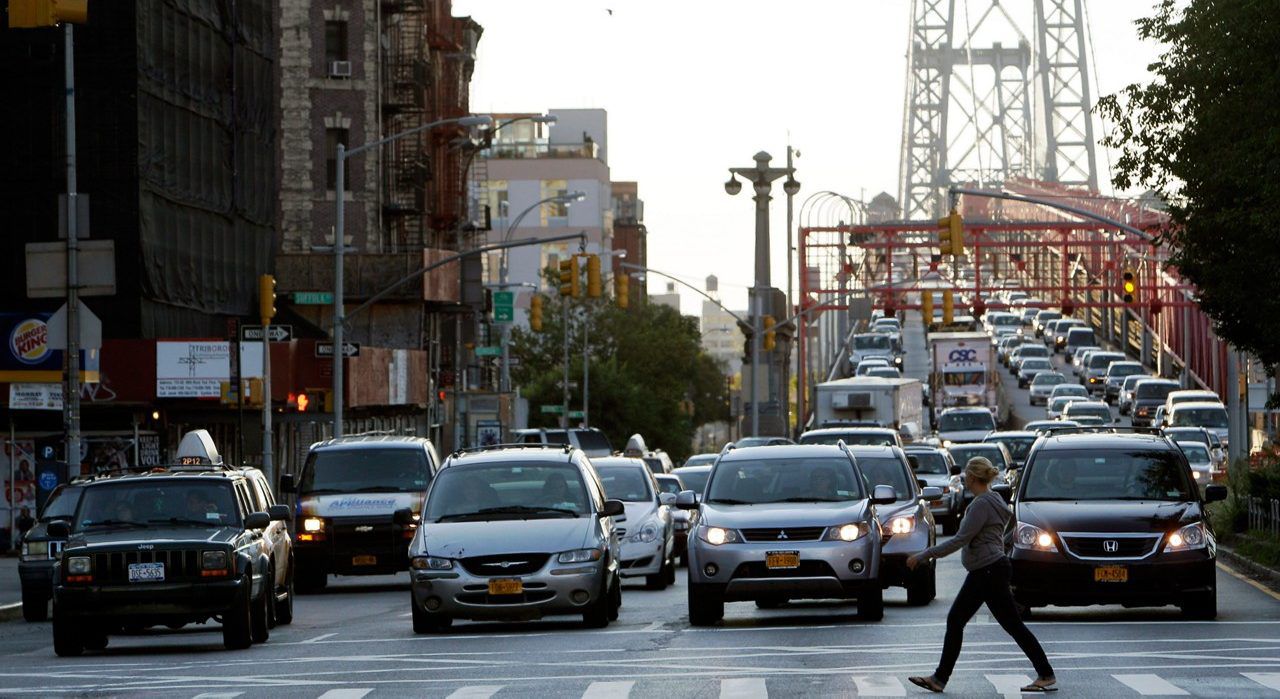New York City’s congestion pricing officially went into effect on Jan. 5, 2025, charging passenger vehicles with E-ZPass a $9 base fare to enter Manhattan below 60th Street.
While commercial vehicles and drivers without E-ZPass will face higher tolls, the program includes a range of discounts and exemptions for eligible individuals and groups.
Applications must be submitted online via the MTA’s website. Applicants are also required to have a valid E-ZPass New York account.
Residents, businesses and organizations are encouraged to begin the process early to ensure approval before the toll system goes live.
Discounts for low-income drivers
Low-income vehicle owners may qualify for a 50% discount on peak-period tolls incurred after the first 10 trips in a calendar month.
To be eligible, applicants must have reported a federal adjusted gross income of no more than $50,000 for the previous year or show enrollment in a qualifying government assistance program, such as the Supplemental Nutrition Assistance Program (SNAP), Special Nutrition Assistance Program for Women, Infants and Children (WIC) or Temporary Assistance for Needy Families Program (TANF).
Proof of income or program enrollment is required during the application, which can be found here.
Exemptions for people with disabilities
Two types of disability exemptions are available: one for people whose disabilities prevent them from using public transportation, and another for organizations that operate vehicles that transport people with disabilities.
- Individual Disability Exemption: Applicants must establish eligibility by visiting an IDEP Assessment Center, presenting proof of enrollment in the MTA’s Access-A-Ride program or showing current enrollment in the NYC Parking Permit for People with Disabilities program (PPPD). If approved, the vehicle with the exemption must be registered to the individual with the disability or to a designated caregiver.
- Organizational Disability Exemption: Organizations such as paratransit providers, ambulette services, schools and special education facilities must submit documentation verifying that their vehicles are used to transport people with disabilities. This can include a New York State Department of Transportation Common Carrier Certificate/Permit, a New York City Transit Access-A-Ride contract number or other state-issued authorizations.
Emergency vehicle exemptions
Qualifying emergency vehicles as defined under New York state law are fully exempt from the congestion toll.
Exempt vehicles include ambulances, fire trucks, police vehicles and hazardous materials response vehicles. Different vehicle types have different eligibility requirements. To see a full list of qualified vehicles, and to apply for the exemption, visit the MTA’s website.
Bus exemptions
Commuter, transit and intercity buses with fixed routes open to the public are exempt from the toll. Commuter vans licensed by the New York City Taxi & Limousine Commission and school buses contracted with the city’s Department of Education are also exempt.
- Public Transit Buses: These must have fixed routes and schedules, with services open to the public. Operators are required to provide their NYSDOT Common Carrier Certificate/Permit when applying.
- Licensed Commuter Vans: Operators must submit their TLC vehicle license, authorization and registration to be found eligible.
- School Buses: DOE-contracted school buses must provide their contract number, expiration date and vehicle registration as part of the application process.
Tour and charter buses are not eligible for exemptions under the program. More information can be found here.
Exemptions for government-owned specialized vehicles
Vehicles designed for specialized public functions and owned or controlled by a federal, state, regional or local government organization can also secure exemptions.
These can include vehicles such as garbage trucks, snow plows, street sweepers and bucket trucks used for maintenance or repairs.
To qualify, applicants must submit proof of government ownership or registration, as well as a detailed description of the vehicle’s specific public service function, with supporting documentation. More information is available on the MTA’s website.




_PKG_CONGESTION_PRICING_HISTORY_CG)


